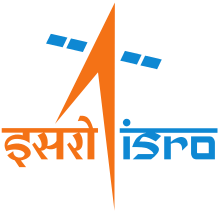Satellite Launch Vehicle
|
Satellite Launch Vehicle | |
| Function | Small launch vehicle |
|---|---|
| Manufacturer | ISRO |
| Country of origin | India |
| Size | |
| Height | 22 metres (72 ft) |
| Diameter | 1 metre (3.3 ft) |
| Mass | 17,000 kilograms (37,000 lb) |
| Capacity | |
| Payload to 400km LEO | 40 kilograms (88 lb) |
| Associated rockets | |
| Derivatives | ASLV, PSLV |
| Launch history | |
| Status | Retired |
| Launch sites | Sriharikota |
| Total launches | 4 |
| Successes | 2 |
| Failures | 1 |
| Partial failures | 1 |
| First flight | 10 August 1979 |
| Last flight | 17 April 1983 |
| Notable payloads | Rohini |
| First stage | |
| Engines | 1 solid |
| Thrust | 502.6 kilonewtons (113,000 lbf) |
| Specific impulse | 253 sec |
| Burn time | 49 seconds |
| Fuel | Solid |
| Second stage | |
| Engines | 1 solid |
| Thrust | 267 kilonewtons (60,000 lbf) |
| Specific impulse | 267 sec |
| Burn time | 40 seconds |
| Fuel | Solid |
| Third stage | |
| Engines | 1 solid |
| Thrust | 90.7 kilonewtons (20,400 lbf) |
| Specific impulse | 277 sec |
| Burn time | 45 seconds |
| Fuel | Solid |
| Fourth stage | |
| Engines | 1 solid |
| Thrust | 26.83 kilonewtons (6,030 lbf) |
| Specific impulse | 283 sec |
| Burn time | 33 seconds |
| Fuel | Solid |
The Satellite Launch Vehicle (Hindi: उपग्रह प्रक्षेपण यान), or SLV was a project started in the early 1970s by the Indian Space Research Organisation to develop the technology needed to launch satellites. The project was headed by APJ Abdul Kalam. SLV was intended to reach a height of 400 km and carry a payload of 40 kg.[1]The first experimental flight of SLV-3, in August 1979, was a failure.[2]
It was a four-stage rocket with all solid-propellant motors.[2]
The first launch of the SLV took place in Sriharikota on 10 August 1979. The fourth and final launch of the SLV took place on 17 April 1983.
Launch History
All four SLV launches occurred from the SLV Launch Pad at the Sriharikota High Altitude Range.
| Flight | Launch date/time (UTC) | Launch pad | Payload | Payload mass | Result | |
|---|---|---|---|---|---|---|
| E1 | 10 August 1979 | SLV Launch Pad | Rohini Technology Payload[3] | 35 kg | Failure | |
|
Faulty valve caused vehicle to crash into the Bay of Bengal 317 seconds after launch [4] [5] | ||||||
| E2 | 18 July 1980 02:33 |
SLV Launch Pad | Rohini RS-1 | 35 kg | Success | |
| D1 | 31 May 1981 | SLV Launch Pad | Rohini RS-D1 | 38 kg | Failure | |
|
Placed into an unusable low orbit, decayed after 9 days[4] [5] | ||||||
| D2 | 17 April 1983 | SLV Launch Pad | Rohini RS-D2 | 41.5 kg | Success | |
A fifth flight of the SLV coming more than 33 years after its last flight will occur on May 23, 2016. A modified version of the launcher consisting of its first stage will loft the HEX-1 Reusable Launch Vehicle technology demonstrator on a 10-minute mission to 70 kilometers in altitude.
See also
References
- ↑ "Launch Vehicles". Department of Space, Government of India. Retrieved 19 January 2014.
- 1 2 "SLV". isro.gov.in. Retrieved 2015-09-05.
- ↑ "Rohini Technology Payload". Retrieved 28 December 2014.
- 1 2 3 Subramanium, T. S. "New Horizons". Frontline. Retrieved 19 January 2014.
- 1 2 3 4 "SHAR Milestones". Satish Dhawan Space Center, ISRO. Retrieved 19 January 2014.

